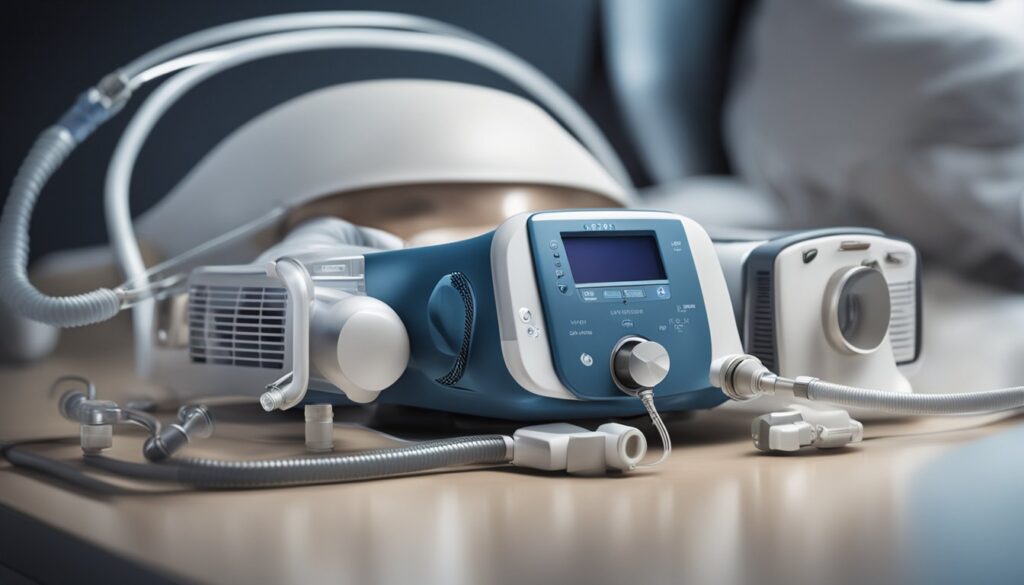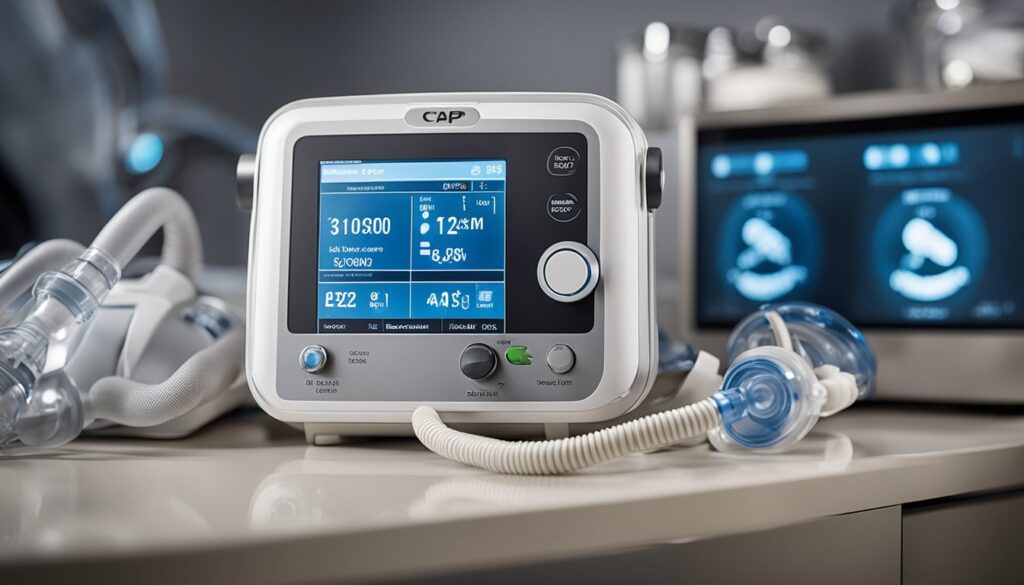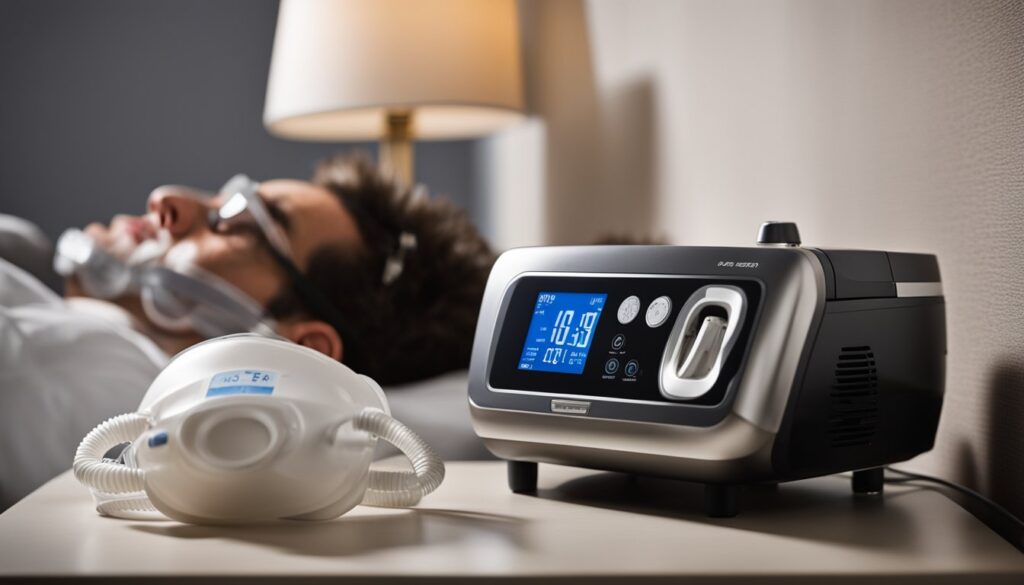Sleep apnea, a disorder affecting numerous individuals worldwide, disrupts normal breathing during sleep. Among its types, obstructive sleep apnea and central sleep apnea are most prevalent. Obstructive sleep apnea is characterized by the repeated collapse of the airway during sleep, leading to snoring and, at worse, life-threatening pauses in breathing. Central sleep apnea, on the other hand, involves the brain not sending proper signals to the muscles that control breathing. Recognizing symptoms and obtaining an accurate diagnosis are crucial steps before considering treatment options.

Treatment methods for sleep apnea are diverse, ranging from positive airway pressure devices to oral appliances and surgical interventions. Your specific condition and the severity of your symptoms often guide the choice of treatment. Continuous Positive Airway Pressure (CPAP) therapy is widely recognized as the standard for managing obstructive sleep apnea, providing a steady stream of air to keep the airway open during sleep. Bilevel Positive Airway Pressure (BiPAP) delivers varying levels of pressure depending on whether you’re inhaling or exhaling and is an alternative for those who have difficulty adapting to CPAP.
Oral Appliance Therapy (OAT) serves as another non-surgical option, especially for those with mild to moderate obstructive sleep apnea; these custom-fitted devices help to maintain an open airway. In cases where non-invasive treatments are not sufficient, sleep apnea surgery may be considered. This involves procedures that modify or remove tissues in the mouth and throat which may block the airway, such as Uvulopalatopharyngoplasty (UPPP) or Maxillomandibular Advancement (MMA). Each of these treatments offers a means to achieve better sleep and improve your overall health.
Treatment Options for Sleep Apnea

When dealing with sleep apnea, a condition that interrupts breathing during sleep, a spectrum of treatments exists, ranging from machines that ensure continuous breathing to surgery. Your specific health needs, severity of the condition, and overall comfort with treatment options will influence the choice of therapy.
Positive Airway Pressure Therapies
Continuous Positive Airway Pressure (CPAP) is the most commonly prescribed therapy for sleep apnea. The CPAP machine maintains a steadied level of pressure in your airways, preventing them from collapsing during sleep. This can significantly reduce symptoms such as sleepiness and snoring while improving your quality of life. Bi-level Positive Airway Pressure (BiPAP) delivers two different levels of pressure for inhalation and exhalation, beneficial if you require higher pressure settings or have conditions such as heart failure or lung disorders.
Adaptive technologies, like Adaptive Servo-Ventilation (ASV) and Auto-Adjusting Positive Airway Pressure (APAP), tailor the pressure in real-time to match your breathing patterns. Prior to starting treatment, a comprehensive evaluation at a sleep disorder center may include overnight monitoring to determine which form of PAP therapy is most suitable for you.
Oral Appliance Therapy
Another option is Oral Appliance Therapy (OAT), where custom-fitted oral devices help keep the throat open by positioning the jaw or tongue to ease breathing during sleep. Oral appliances may be a good choice if you have mild to moderate obstructive sleep apnea and prefer an alternative to PAP therapy. They can be particularly effective for reducing snoring and improving airflow. For best results, these devices should be customized by a dentist specializing in sleep apnea.
Surgical Interventions
Sometimes, when PAP therapy and oral devices aren’t effective or suitable, various surgical interventions may be considered. These range from procedures like Uvulopalatopharyngoplasty (UPPP), which removes excess tissue in the throat, to more complex surgeries such as Maxillomandibular Advancement that realign the bones of your upper and lower jaw to enlarge the upper airway.
Certain individuals with severe sleep apnea or related health conditions like heart disease or high blood pressure may benefit from surgeries aimed at mitigating these risk factors. Surgeries like tracheostomy or bariatric surgery could be vital in severe cases, especially when sleep apnea contributes to life-threatening conditions. It is important to discuss the risks and benefits of surgical interventions with a sleep specialist to make an informed decision.
Managing Sleep Apnea

Effective management of sleep apnea encompasses a multi-faceted approach including lifestyle modifications, medical devices, and ongoing care with the aim to improve your quality of life, regulate your blood oxygen levels, and alleviate symptoms such as snoring and daytime sleepiness.
Lifestyle and Home Remedies
Lifestyle Changes: You can take steps to improve mild sleep apnea by implementing certain lifestyle changes. Losing weight can significantly reduce the severity of sleep apnea for some, as excess weight contributes to throat constriction. Regular exercise can improve your energy levels and sleep quality, while reducing sleep apnea symptoms.
Avoiding Alcohol and Sedatives: Limiting alcohol consumption and avoiding sedatives before bedtime may help as they relax the throat muscles, which can worsen breathing pauses and snoring.
Positional Therapy: For some, sleeping on the side instead of the back—known as positional therapy—can reduce the frequency of apnea events, since gravity can cause the tongue and soft tissues to obstruct the airway when lying on one’s back.
Oropharyngeal Exercises: These exercises can strengthen the muscles in your throat and help alleviate mild sleep apnea.
Medical and Device Interventions
Positive Airway Pressure Devices: CPAP (Continuous Positive Airway Pressure) is often the first-line treatment for moderate to severe OSA. It keeps the airway open by providing a constant stream of air through a mask. Other devices like BiPAP (Bilevel Positive Airway Pressure) provide different pressures for inhaling and exhaling, suitable for certain conditions like CSA (central sleep apnea).
Oral Appliances: An oral device, such as a mandibular advancement device, may be helpful if you have mild to moderate sleep apnea. These devices, fitted by a sleep specialist or dentist, can keep the throat open by bringing your jaw forward during sleep.
Surgery: In selected cases where anatomical abnormalities are the cause of sleep apnea, surgery may be considered to remove or reduce the offending tissues.
Nerve Stimulation: Recent advances like transvenous phrenic nerve stimulation are therapy options for those who cannot tolerate CPAP.
Follow-up and Ongoing Care
Regular Appointments: Maintain regular appointments with your sleep specialist to assess the effectiveness of your treatment and make necessary adjustments.
Tracking Progress: Use a device with features to track therapy compliance, brain activity, arm and leg movements, and blood oxygen levels. This personal information can be invaluable for your sleep specialist to understand your specific condition.
Education: Stay informed about your condition by reading printed material or visiting websites provided by credible organizations like the American Lung Association or the American Academy of Sleep Medicine.
Monitoring Health Conditions: Because sleep apnea can lead to or exacerbate other health issues like high blood pressure and heart disease, it’s crucial to monitor any medical problems and communicate with your healthcare provider about changes in your symptoms or quality of life.